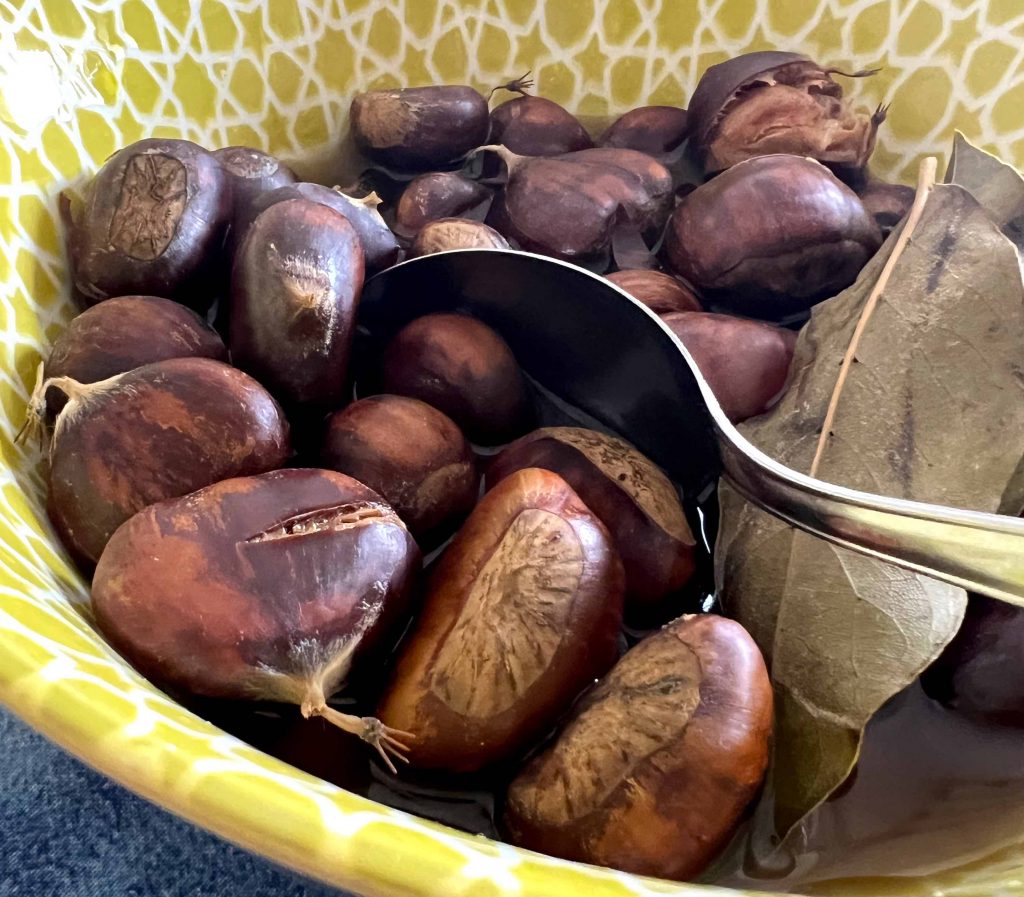Details:

Chestnuts are one of the most recognizable flavors of the Italian autumn. They speak of woods scented with damp leaves, of fireplaces lit in communal rooms, of hands warming around a freshly toasted paper cone. In agriturismi, chestnut season is an invitation to slow down: a walk through the chestnut groves, the return with a basketful, cooking together in the kitchen or outdoors, and finally the table, where these fruits become a snack, a side dish, or a rustic dessert.
The season and responsible foraging
From late September to November, the burrs open on their own and drop the ripest fruits. That’s the right moment to look for them: you don’t pick them from the tree, you gather them from the ground, choosing firm, glossy nuts without holes or deep cracks. In many parts of Italy, foraging is regulated: on private land you need the owner’s permission; in community forests there may be quantity limits or specific days. Agriturismi located at the edge of chestnut woods often escort guests on short guided walks and explain how to move without damaging the understory. Sturdy gloves, hiking boots, and well-ventilated baskets are the simplest, most respectful tools; closed plastic bags, instead, make the fruit sweat and shorten its life.
How to choose and store them
Even when you buy them, the best chestnuts are recognized by touch and sound: they should feel heavy, with no empty space inside, and they shouldn’t rattle when shaken. At home, store them cool and dry, ideally in the fridge’s vegetable drawer inside a perforated bag. Use them within a few days, or cook them: a quick boil or a toast in a perforated pan, followed by peeling while still hot, lets you add them to soups, stuffings, creams, and desserts. To extend the season, score them and freeze them raw: they’ll be perfect on cold days for an impromptu snack.
Flavor in the kitchen
Technically a fruit, chestnuts behave at the table almost like a cereal: rich in starch and naturally gluten-free, they are filling and pair beautifully with aromatic herbs, cured meats and mountain cheeses, mushrooms, and roasted meats. In the most tradition-minded agriturismi you’ll see them at the center of straightforward dishes, cooked with few aromatics and the right timing, so their gentle sweetness stays in the foreground.
Sardinian recipe: boiled chestnuts with sage
Among the simplest and most fragrant ways to enjoy them is a homestyle preparation also very common in Sardinia: boiled chestnuts with sage. It’s a no-frills recipe, perfect at day’s end, ideal as a warm snack or a small interlude between a charcuterie starter and a meat course. Start by scoring each chestnut across the belly with a horizontal cut that goes through shell and inner skin: this is crucial to prevent them from bursting during cooking and to make peeling easier. Rinse the chestnuts in cold water, discarding any that float, and drop them into a pot of water seasoned with a tablespoon of coarse salt, a few fresh sage leaves, and one or two bay leaves. Many families also add a thin strip of untreated mandarin or orange peel, which brings a Mediterranean aroma without overpowering. From the boil, simmer gently for a generous half hour, until the center is tender; exact timing depends on size, so taste and adjust. Once drained, let them rest by covering the pot for five minutes with a little cooking water left at the bottom: the steam helps release even the most stubborn inner skin. Serve hot, plain, or with a drizzle of extra-virgin olive oil and a pinch of salt. Some people finish with a teaspoon of strawberry-tree honey or chestnut honey for a gentle sweet-bitter contrast.
Pairings and atmosphere
This dish calls for honest, local wines: a Vernaccia di Oristano if you want to stay in Sardinia, or a young, not too structured red—sparkling works too—to cleanse the palate from the chestnuts’ softness. In an agriturismo, the best moment often comes after dinner, when the last boiled chestnuts are passed from hand to hand and peeled together, while the fireplace gives off its final embers.
Why serve them at an agriturismo
Boiled chestnuts with sage tell the story of the land in an immediate way: few aromatics, simple cooking, comforting results. On a menu they work as a seasonal welcome, as a snack after a walk among the chestnut trees, as a side for local cheeses and cured meats, or as a rustic end to the meal. Above all, they’re a pretext for a complete experience—from woodland to kitchen to the shared table.

Comments are closed.